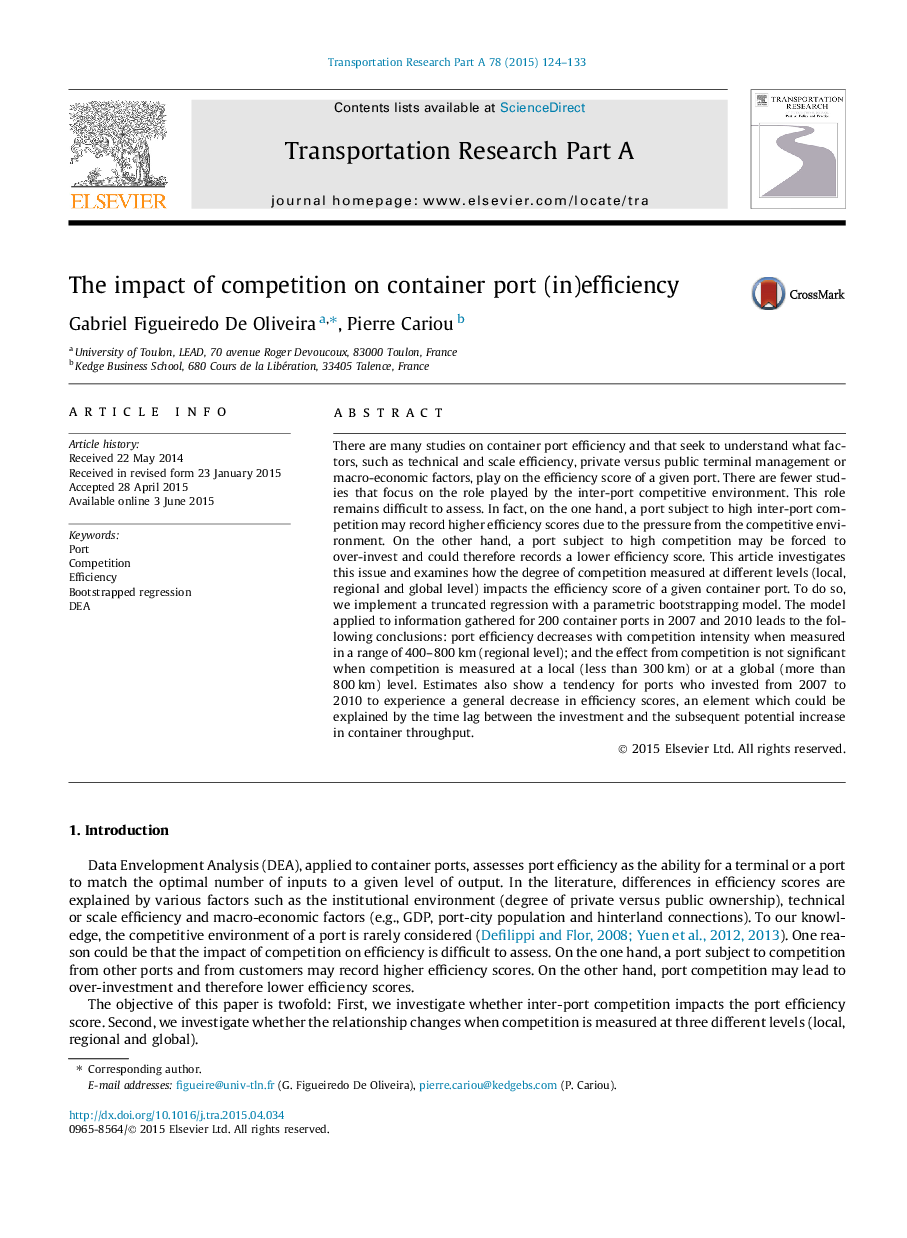| Article ID | Journal | Published Year | Pages | File Type |
|---|---|---|---|---|
| 6781245 | Transportation Research Part A: Policy and Practice | 2015 | 10 Pages |
Abstract
There are many studies on container port efficiency and that seek to understand what factors, such as technical and scale efficiency, private versus public terminal management or macro-economic factors, play on the efficiency score of a given port. There are fewer studies that focus on the role played by the inter-port competitive environment. This role remains difficult to assess. In fact, on the one hand, a port subject to high inter-port competition may record higher efficiency scores due to the pressure from the competitive environment. On the other hand, a port subject to high competition may be forced to over-invest and could therefore records a lower efficiency score. This article investigates this issue and examines how the degree of competition measured at different levels (local, regional and global level) impacts the efficiency score of a given container port. To do so, we implement a truncated regression with a parametric bootstrapping model. The model applied to information gathered for 200 container ports in 2007 and 2010 leads to the following conclusions: port efficiency decreases with competition intensity when measured in a range of 400-800Â km (regional level); and the effect from competition is not significant when competition is measured at a local (less than 300Â km) or at a global (more than 800Â km) level. Estimates also show a tendency for ports who invested from 2007 to 2010 to experience a general decrease in efficiency scores, an element which could be explained by the time lag between the investment and the subsequent potential increase in container throughput.
Keywords
Related Topics
Physical Sciences and Engineering
Engineering
Civil and Structural Engineering
Authors
Gabriel Figueiredo De Oliveira, Pierre Cariou,
